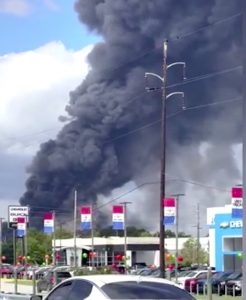The potential for freezing rain that was forecast for the morning hours of Jan. 8 did not arrive, even though officials at schools in Coweta and Fayette counties cancelled school for the day. Was there a cost to having school and other activities cancelled, and what would the cost have been if no precautionary forecast had been made and the worst happened?
National Weather Service in Peachtree City Meteorologist-In-Charge Keith Stellman was asked about the forecast, how it was derived and what happens when a winter weather forecast is wrong.
Stellman said making a winter weather forecast, as in the case of Jan. 8, is a function of the temperature profile in the atmosphere. There are 77 sites in the country, including in Peachtree City, from which weather balloons are launched. The temperature profile is measured at 2,000 feet, then at 2,000-foot increments.
Meteorologists then must interpret and infer the data, which can change quickly, and thus altering the temperature profile, Stellman said.
“Trying to follow those changes is challenging,” said Stellman, adding that winter weather is the hardest thing to forecast.
Added into the forecast mix are the hundreds of forecast models currently available.
“Our job is to see where the majority of the models are pointing,” Stellman noted.
The freezing rain potential for the morning hours of Jan. 8 extended from Fayette and Coweta counties on the south, where only a slight amount might have occurred, and up through northwest Georgia that had the potential to see more frozen precipitation.
Commenting on the chance for a small amount of freezing rain on Jan. 8, Stellman said there was frozen precipitation “above our heads but it was evaporating and not coming to the ground.”
With the temperature on the ground hovering around freezing, “There was a lower-end chance (for Fayette and Coweta), but a higher-risk scenario,” said Stellman, given that temperatures on the ground were so cold. “But if (the freezing rain) happens, the risk is greater.”
Northwest Georgia also had the potential for a small amount of freezing rain. And it was in some of those areas that the precipitation made it to the ground. The resulting combination of freezing rain falling onto cold ground surfaces contributed to a 35-car pile-up on I-75 in north Georgia, Stellman noted.
“It’s all about risk-assessment,” Stellman explained, noting the extremely low temperatures that covered the state and much of the eastern U.S. in preceding days. “If we knew the ground was 32 degrees or above we wouldn’t have done anything.”
Looking back at the forecast for a small amount of freezing rain, Stellman on Thursday said NWS used computer guidance models and data from the balloon. And though no freezing rain fell locally, he said that, in terms of the safety of the travelling public, it is better to be safe than sorry.
Stellman acknowledged that there is a cost that comes with a winter weather forecast, including resulting school closures or the closures of government offices or private businesses.
“If it had happened and we didn’t do anything (to notify the pubic about the potential for safety concerns), what does that say about us. And what is the cost then?” he said.
When it comes to cancelling school during winter weather events, Fayette County School System Superintendent Jody Barrow explained that criteria.
Barrow said the multi-part process is extensive and deliberate. That process, which includes the participation of several school system staff, involves monitoring National Weather Service bulletins and attending NWS briefings and those held by the Fayette County Emergency Management Agency. The school system also communicates with area school systems, especially Coweta County. Prior to making a decision to cancel school, the school system also sends preliminary alerts to parents on the potential for closing school.
“We’re sensitive to parents who have to plan ahead for closures,” said Barrow.
The school system also monitors local conditions and receives texts on weather conditions from law enforcement across the county, Barrow said.
Pertaining to the Jan. 8 closure, Barrow said the ground was cold and that, “We were on the edge, and we called it out of an abundance of caution. We will always err on the side of safety for our students and staff.”











Leave a Comment
You must be logged in to post a comment.